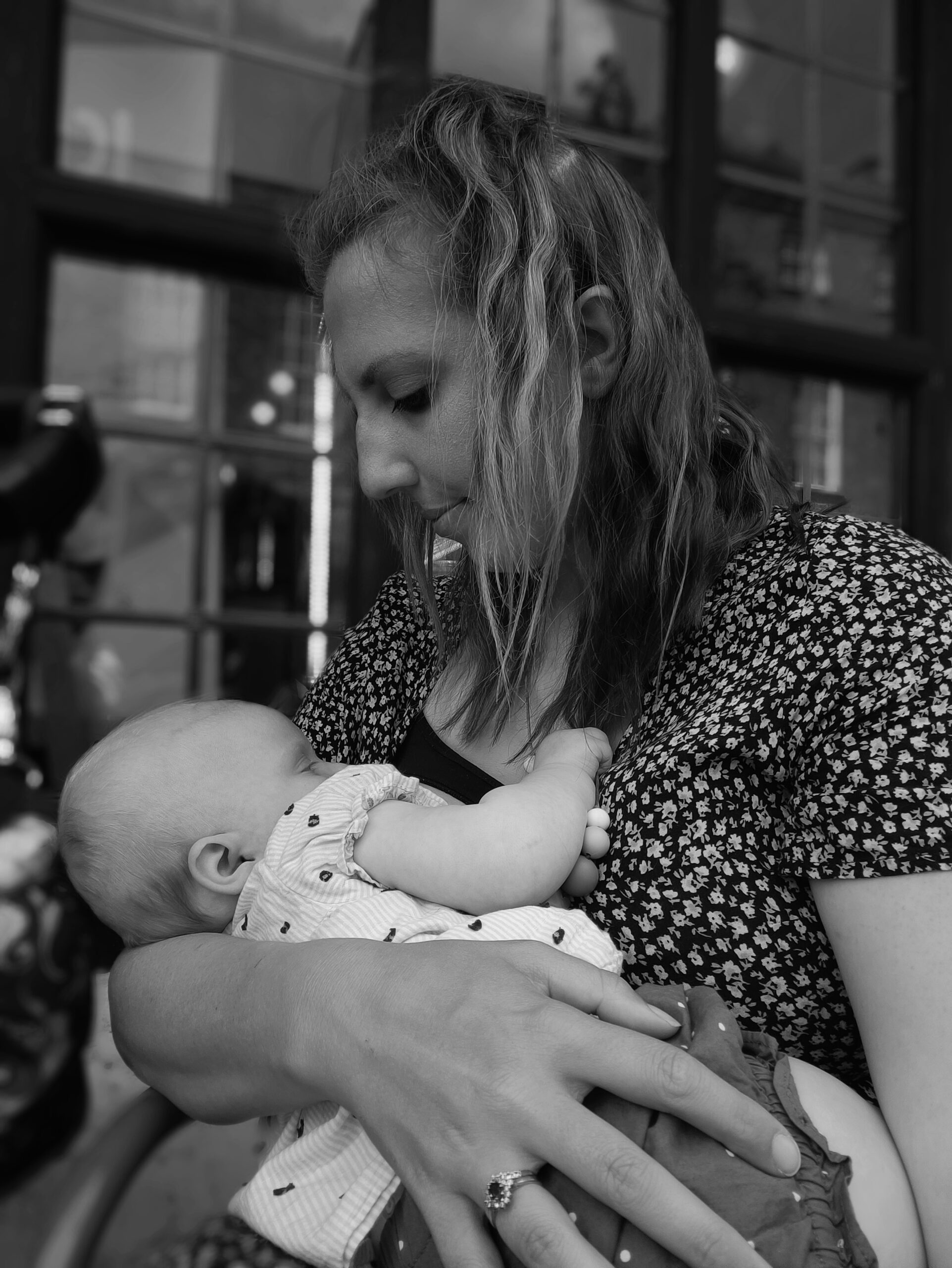Adapted from the article “Science into Practice” in 3 Volume 36 of the ELACTA journal Lactation & Breastfeeding
Introduction
Concerns about milk supply are one of the most common reasons cited for stopping breastfeeding before six months (Brown et al., 2014). Many women utilise infant satisfaction cues as their main indication of milk supply and many researchers, clinicians, and women do not evaluate actual milk production (Gatti & Xi, 2015).
In fully breastfed, thriving children, we don’t actually need to quantify milk supply; their weight development shows us simply and effectively that their milk and calorie intake is sufficient. However, if a breastfed child is not thriving and needs to be supplemented or if a mother needs to know how much breast milk needs to be provided in case of short- or long-term separation, estimates of milk production volumes can be relevant.
In fully breastfed, thriving children, we don’t actually need to quantify milk supply; their weight development shows us simply and effectively that their milk and calorie intake is sufficient.
Methods for Measuring Breast Milk Intake
Several methods exist to estimate breast milk intake in infants. Dr Magali Rios-Leyvraz reports in her article “The breast milk intake of infants and young children: Global and recent estimates” in 1 Volume 36 of Lactation & Breastfeeding that the most commonly used methods for estimating breast milk intake in infants are test-weighing and deuterium dilution.
Although these two methods are considered to be the most accurate ones (Scanlon et al, 2022), they can still be prone to errors and can be challenging to implement with newborns in practice. Whilst the deuterium dilution method is typically only used in the research setting, test-weighing can be carried out at home but requires weighing before and after EVERY feed over 24 hours with scales that should be able to recognise small weight differences of 1-2 g reliably. Such precision baby scales are usually very expensive. It is unrealistic to expect parents to purchase these.
Keeping track of excretions, observing and assessing breastfeeding behaviour and milk transfer as well as monitoring the child’s weight development are all reliable methods for assessing milk supply when breastfeeding is going well. But is there another way which allows a mother to measure her actual produced breast milk volume objectively when breastfeeding is not going as expected?
Monitoring Milk Transfer With A Nipple Shield With Inbuilt Flow Measurement
An Irish company, named Coroflo, has developed a breastfeeding monitor (Fig. 1) which uses an ultrathin silicone nipple shield with an inbuilt flow measurement that is supposed to measure milk supply accurately and reliably. This was demonstrated in the laboratory and testing is ongoing to ensure accuracy is repeated in vivo.
In vivo testing was scheduled for completion in August 2024. The company aim to launch towards the end of 2024. Independent research groups will conduct autonomous studies on the breastfeeding monitor to collect their own data (written communication with Helen Barry, Chief Research Officer, Coroflo).
Fig 1. Breastfeeding monitor with inbuilt flow metre. Picture from https://www.corobaby.com
The smart device is connected to an app that receives the transferred volume measurements in real time for each breast after the user selects the left or right side. The breastfeeding monitor is applied in the same way as any standard nipple shield, washed with warm soapy water and rinsed after use, then air dried before it is placed in its pod for charging.
What We Know About Nipple Shields
Ultrathin nipple shields may be instrumental in increasing milk transfer for premature babies and may help them with transitioning to direct breastfeeding (Meier, 2000). Another study by Chertok found that there was no significant difference in infant test weights when breastfeeding with and without an ultrathin nipple shield (Chertok, 2009). Newer findings from 2019 however indicate that the use of nipple shields does not promote exclusive breastfeeding in preterm infants (Maastrup et al., 2019). Such different conclusions show that we are still in need for well-designed studies that investigate nipple shields as independent risk factors for reduced milk supply and early discontinuation of breastfeeding.
The breastfeeding monitor with its embedded tiny non-invasive sensor, a patented micro-flow metre, may make a difference to a very small cohort of infants who are already used to breastfeeding with a nipple shield. Often, nipple shield use is much more widespread than is sensible from a breastfeeding counselling point of view. This may be because of prematurity or latching difficulties where breastfeeding challenges already exist and accurate and reliable measurement of milk flow to the infant may help to assess milk supply and calculate adequate supplementation volumes where necessary.
Considerations For The Breastfeeding Monitor
Coroflo will make their product freely available on the market, without the requirement of a prescription or assessment by a healthcare provider trained in breastfeeding counselling (written communication with Helen Barry, Chief Research Officer, Coroflo). This may give mothers the impression that every parent must own a breastfeeding monitor in order to breastfeed successfully, drawing their attention further away from responding to their babies’ cues and trusting an app instead. Parents may start to feel more anxious, especially if experiencing technical glitches (which can happen with any app) and may feel less connected to their babies.
Most infants who do not normally breastfeed with a nipple shield may not as easily as suggested just switch between feeding with a shield for a “quick measurement” and direct breastfeeding. Even if they manage to feed with a nipple shield, they may transfer milk very differently to how they would normally do. Introducing a nipple shield into the breastfeeding relationship may also impact the infant’s latch during direct breastfeeding.
Conclusion
Despite all the advances in technology and medicine, there does not yet seem to exist a method that makes it possible to measure breast milk supply accurately and reliably without interfering with direct breastfeeding. This is anything but satisfactory for breastfeeding dyads and supporters but further innovations in the future may find a solution to this problem.
References:
Brown C, Dodds L, Legge A, Bryanton J, Semenic S: Factors influencing the reasons why mothers stop breastfeeding. https://www.ncbi.nlm.nih.gov/pmc/articles/PMC6972160/; retrieved June 2024
Gatti L, Xi: Maternal Perceptions of Insufficient Milk Supply in Breastfeeding. https://www.ncbi.nlm.nih.gov/pmc/articles/PMC4508856/; retrieved June 2024
Scanlon K, Alexander M, Serdula M, Davis M, Bowman B: Assessment of infant feeding: the validity of measuring milk intake. https://pubmed.ncbi.nlm.nih.gov/12199299/; retrieved June 2024
Meier P, Brown L, Hurst N, Spatz D, Engstrom J, Borucki, Krouse A: Nipple shields for preterm infants: effect on milk transfer and duration of breastfeeding. https://pubmed.ncbi.nlm.nih.gov/11153341/; retrieved June 2024
Chertok I: Reexamination of ultra-thin nipple shield use, infant growth and maternal satisfaction. https://onlinelibrary.wiley.com/doi/10.1111/j.1365-2702.2009.02912.x; retrieved June 2024
Maastrup R, Walloee S, Kronborg H: Nipple shield use in preterm infants: Prevalence, motives for use and association with exclusive breastfeeding-Results from a national cohort. https://pubmed.ncbi.nlm.nih.gov/31539900/; retrieved June 2024


















